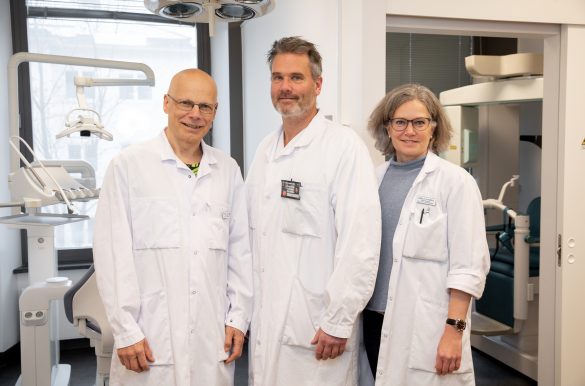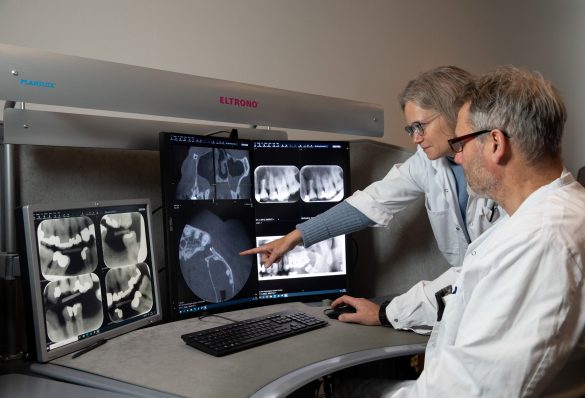Ulf mentions that the 3D reconstruction function is popular when demonstrating images to those who are not used to viewing image slices, particularly since it makes it easier to see complex cases. He says: “It serves a nice pedagogical purpose when showing a case to other specialists, students and the patients themselves.”
For functionalities that are highly dentist-specific, such as advanced tooth implant or orthodontic treatment planning, Linda and Ulf say they use third-party applications integrated with Sectra’s Enterprise Imaging solution. Gerald explains that these integrations are made via standardized APIs and are easily accessible by right clicking on the images where they need to be applied.
Being able to seamlessly integrate advanced applications is something that Filip describes as important for the entire enterprise imaging strategy. It makes it possible to meet the needs of various specialties by establishing tight integrations with advanced tools within one user interface. “The user should never have to switch context and lose focus,” he says.
When it comes to teaching, Gerald says that the teaching file functionality is the most commonly used and appreciated. It allows users to add specific tags to cases in order to create repositories for educational or research purposes. This functionality also allows users to easily export images to presentations for educational use.
Overall, the tools most frequently used by maxillofacial radiologists are very similar to those regularly used by other specialties within radiology. Sectra’s Enterprise Imaging solution therefore fits the needs of maxillofacial radiology well. When it comes to dental-specific advanced tools that are not available, Ulf and Linda explain that they are happy with the integrations with third-party applications that they use today to meet those needs.
Looking ahead at future enhancements
In the coming year, Gerald says that one big improvement will be to start using the worklists in Sectrass Enterprise Imaging solution to utilize a PACS-driven workflow. “Such a workflow will be significantly more efficient than the manual one we have today,” says Gerald.
Filip explains that this is a shift that many of Sectra’s customers are making at the moment: “Using the worklists in PACS means that the user experience will be even further unified since all patient data, worklists and images will be natively accessible in one system and user interface.”
Gerald adds that another improvement will be to integrate their applications for analysis and treatment planning, digital impressions based on intraoral scanning, and CAD/CAM software (Computer-Aided Design and Manufacturing). “We hope that Sectra is willing to develop a tool for curved measuring of root canals and teeth. This would be very useful for us,” Ulf and Linda say.








